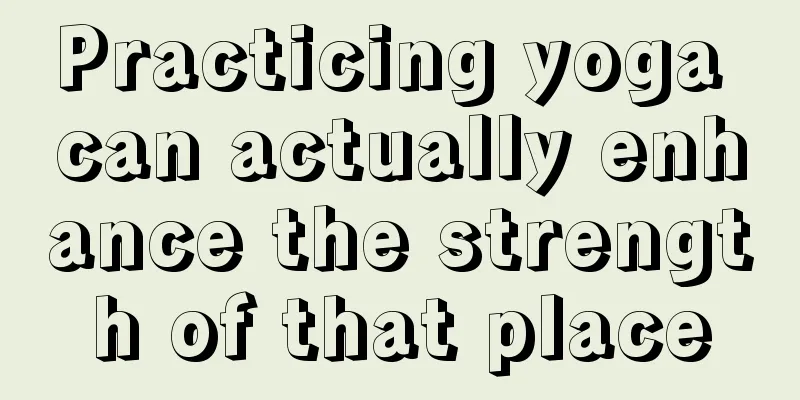Experience sharing: Several ways to save energy when hiking in the mountains

|
I recently went hiking with some fellow hikers and discovered that many of them were not good at saving energy. When they were extremely tired, they were unable to climb up and at the same time they were wasting their energy unnecessarily. I would like to share my personal experience with you. 1. Talk less Speaking consumes a lot of physical energy. It requires the mobilization of multiple muscle tissues such as the oral muscles, throat muscles, and lung muscles, and requires blood to be called from the heart to supply these muscle movements. What's more serious is that the amount of oxygen consumed by speaking is very huge. When we talk, almost all the oxygen inhaled by the lungs is used to supply speaking, and the oxygen content in the blood drops rapidly. If you shout loudly or talk continuously, you will consume even more physical energy. Therefore, talking as little as possible during a trip is an important way to save energy. In addition, talking less, observing more, and experiencing more is one of the signs of a mature hiker. It is a good quality of a classy donkey. Some hikers who talk incessantly and nonsensically along the way are very annoying. At the same time, listening to others chattering in your ears is a waste of physical energy and makes you feel bad. Therefore, if it is not necessary, try not to say too much to avoid hurting others and yourself.
2. Reduce the number of times you sit down to rest When many hikers feel tired while going uphill, they sit down without falling. When I want to walk, my already very tired legs have to expend a lot of energy to support my entire body and backpack. In fact, there are many ways to rest, and it is not necessary to sit down completely: One is to choose a tree trunk to lean against to reduce the burden on your legs and relieve pressure. The second is to choose a higher place to sit down. It is best to sit on a slope or stone with a smaller height difference from the hips to rest, so that when you get up and walk, you don’t have to expend a lot of energy to lift your whole body. The third is to use a rest method specifically for donkey trips (named after me, Qiu Shui): use your hands to support your upper body on your knees, bend your upper body into a balance bridge, keep your back horizontal, place the backpack steadily on your back, bend your legs slightly, face uphill, and relax your torso. This can reduce the weight on your shoulders and relieve the pressure on your spine from top to bottom, quickly relieve fatigue, and restore your strength. When starting, do not lift your upper body quickly, but slowly return your torso to its normal position as you move upward. Fourth, try to breathe deeply and slow down your pace until you feel it is no longer strenuous. Spread rest among each step and reduce the number of rest times. Fifth, if you sit down to rest, try to sit down where there is a flat road ahead, rather than going to a high place to rest immediately after resting. Otherwise, after resting, the heart, lungs and muscles are in a calm state, and suddenly requiring huge physical energy will not only cause danger, but also waste more physical energy. Six is to take small steps, walking with your feet slightly dragging. Taking small steps can save some physical energy. When going up a mountain, don't lift your feet too high, just drag them on the ground slightly. As long as it does not affect your walking and safety, it can save physical energy. Pay attention to these small details and make them a habit, and you can save a lot of physical energy. Seventh, when you go up to a high platform, you can use your hands to help lift your legs up, and then use your hands to press your knees to lift your body. There are many roads in the mountains, and suddenly you will need to climb up a high stone platform. If you are very tired at this time, do not use all the strength of your legs to raise your body, because your legs have not stopped being used during the process of climbing the mountain, and the muscles will become cramped and inflexible when they are extremely tired, so it is best to coordinate the upper and lower limbs, which can save a lot of physical strength and ensure safety.
3. Deep breathing method Many hikers breathe short, shallow and irregularly when going uphill, which makes them increasingly tired. When going up a mountain, keep your steps and breathing at an appropriate rhythm, and control them intentionally until you get used to it. When walking up a steep slope with weight, try to breathe in and out with one step at a time. When you feel tired, deepen your breathing and intentionally slow down your pace slightly so that energy is evenly distributed with your breathing. Rapid breathing is a waste of lung muscle activity. The same amount of exercise cannot absorb enough oxygen, which is something hikers should pay attention to. With a good pace and breathing rhythm, you can hike for hours without stopping to rest and without feeling tired.
4. Try to lower your center of gravity when going uphill It is easy to understand from a physics perspective. A low center of gravity not only makes your steps more steady, but also saves physical energy. For example, shorter people save more energy when climbing mountains than tall people. Lean your upper body forward slightly to a comfortable angle and let gravity help you climb the mountain. If it is a steep slope, it is best to use your hands and feet together. This will be very easy. The slope in front just makes up for the length of your arms, allowing people to walk on all fours like animals. This is one of the ways to save energy. Those equipped can use a cane to achieve this effect. |
<<: How to use plastic bags wisely during outdoor activities
>>: Three Do's and Three Don'ts for Hiking Activities
Recommend
How to build muscle for thin people
Nowadays, being thin is considered beautiful, and...
How to do muscle stretching exercises
Many friends will feel very tired and their bodie...
What are the dangers of aerobic exercise?
Aerobic exercise is now known as the healthiest e...
What is the correct way to stretch your legs?
The human body relies on its legs to walk, stand,...
What are the methods and precautions for long-distance running?
Running is a form of exercise that is very benefi...
What should I do if I have bone and joint pain after exercise?
Now many people have realized the importance of e...
How to lose weight by doing morning exercises?
Nowadays, many people believe that morning exerci...
What do you need to prepare for camping?
What do we need to prepare for camping? If you wa...
Are weight loss exercises considered aerobic exercise?
Many girls love to do weight loss exercises becau...
How to lose weight and grow muscles through exercise
Losing weight is a topic that most people discuss...
How to skip rope effectively?
If a child has not reached the general height sta...
How many times should I skip rope to lose weight?
When it comes to the problem of obesity, it has a...
What exercises can help you lose belly fat?
Nowadays, many people sit all day at work and rar...
What kind of exercise can help you grow taller?
With the improvement of living standards, the ave...
How to choose a bicycle for exercise
Every year, there are various new bicycle models ...









